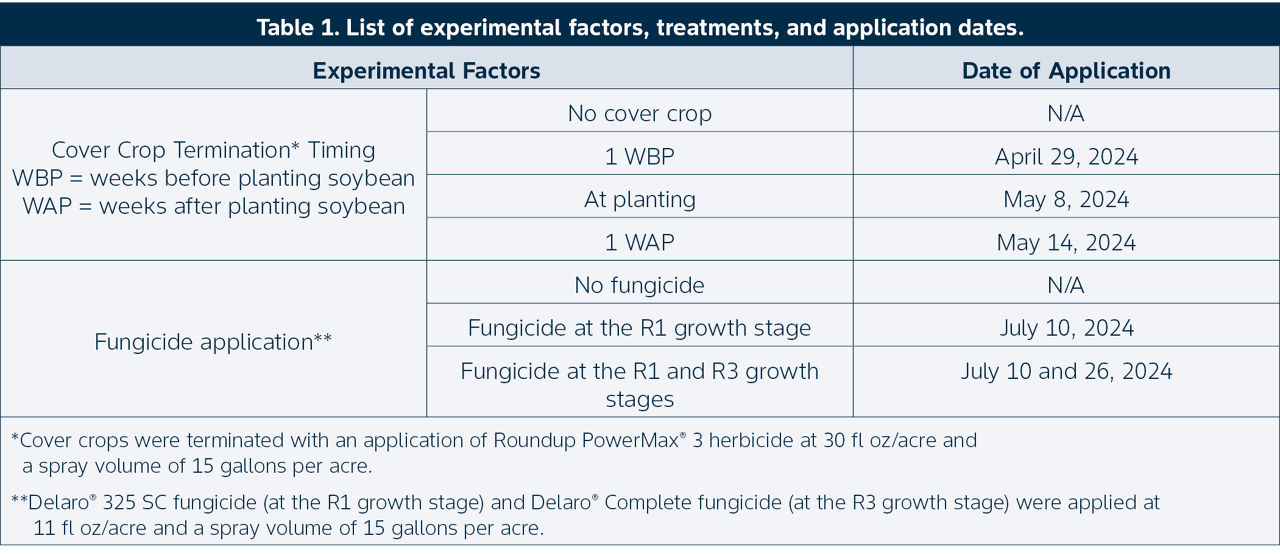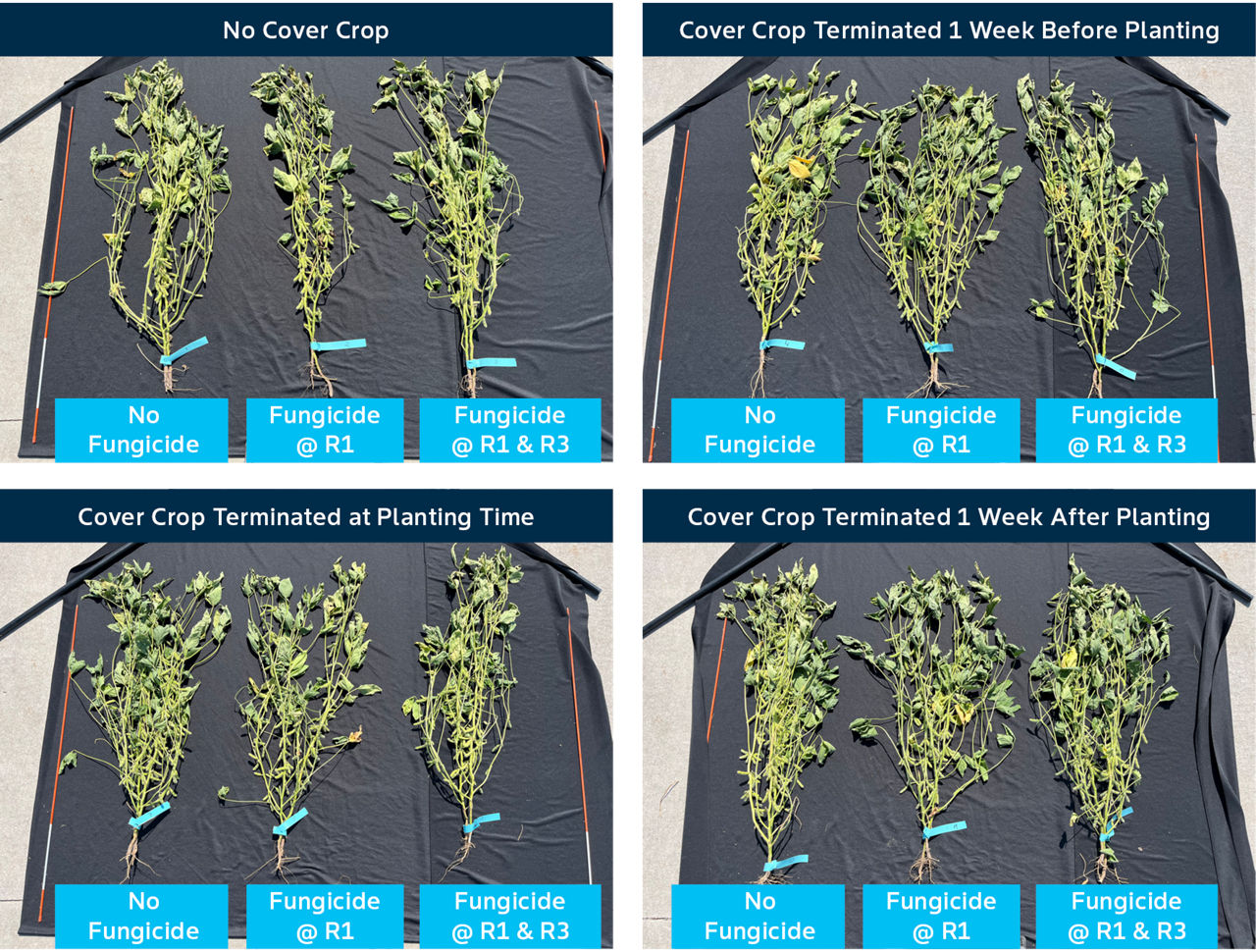Influence of Fungicide Application and Cover Crop Termination Timing on Soybean Yield.
February 6, 2025
TRIAL OBJECTIVE
- Delaro® brand fungicides offer broad-spectrum disease control against major soybean diseases. They also promote healthy, dark green leaves for improved photosynthesis and increased plant stress resistance for full yield potential.
- Cover crops can be beneficial in soybean production by helping in weed suppression, recycling nutrients, and increasing water infiltration. Soybean can tolerate late termination of cover crops in irrigated environments.
- The objective of this trial was to evaluate the effects of fungicide applications on soybean yield following a cover crop.
RESEARCH SITE DETAILS

- The trial design was a randomized complete block. The two treatment factors were cover crop termination timing and fungicide application. There were four replications (Table 1).

- Field operations, cover crop seeding rate and planting time, fertilizer, herbicide, irrigation, and precipitation information are listed in Table 2.

- Grain weight, test weight, and percent grain moisture content for each plot were collected with a small plot combine and used to calculate yield per acre (bu/acre).
- Statistical analysis using Fisher’s Least Significant Difference (LSD) was performed on the data.

UNDERSTANDING THE RESULTS
Soybean Yield

- The main effect of fungicide application, averaged across all cover crop termination timings, did not result in higher soybean yield.
- Soybean yields, averaged across the fungicide treatments, were higher with cover crops than without a cover crop.
- Within the no cover crop treatment, fungicide application did not improve soybean yields (Figure 2).
- When cover crops were terminated one week before soybean planting (1 WBP), plants with fungicide applied at both the R1 and R3 growth stages had lower yields than the untreated control (no fungicide), and similar yields to a single fungicide application (Figure 2).
- In plots where cover crops had been terminated at soybean planting (At Planting), yield results were similar regardless of fungicide treatment (Figure 2).
- When cover crops were terminated one week after soybean planting (1 WAP), the no-fungicide treatment and R1+R3 fungicide treatment had higher yields than the single fungicide application (fungicide at R1) (Figure 2).
- On average, soybean yield was higher when cover crops were terminated one week after planting (1 WAP). In the 1 WAP treatment, soybean yield was 73.4 bu/acre compared to 71.9 bu/acre when terminated at planting, 72.6 bu/acre when terminated one week before planting (1 WBP), and 69.7 bu/acre without a cover crop.

KEY LEARNINGS
- Cover crops improved soybean yield in this study. In late cover crop termination scenarios, producers may be able to combine those operations with a pre-emergence herbicide application.
- More studies are needed to clarify the benefits of applying a fungicide to soybean following a cover crop.
- Visit with your local Bayer agronomist for more information in fungicide application performance and cover crop management.
1326_501274